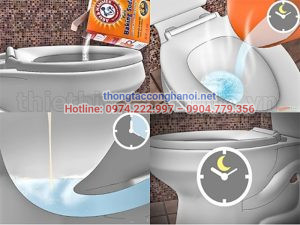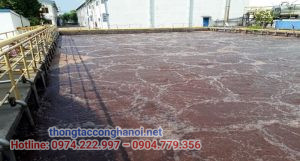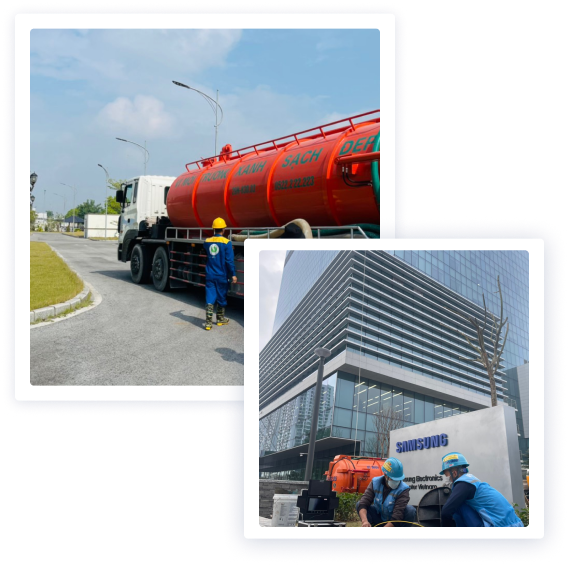As you know each time you turn on a faucet, flush a toilet, or do a load of laundry, the water and waste travels out of the house and into the Septic Tanks.
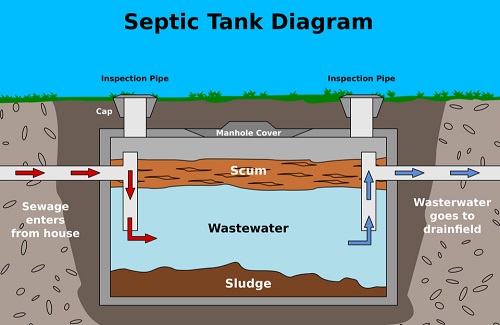
So, what is a Septic Tanks?
A septic tanks collects and treats wastewater at a property that is not connected to the mains sewer system.
Installed underground, a septic tanks makes use of natural processes to treat the sewage it stores. Usually made up of two chambers or compartments, the tank receives wastewater from an inlet pipe.
Wastewater enters the first chamber and separates over time, with solids settling at the bottom, oils and greases forming a layer of scum at the top, and a layer of relatively clear water remaining in the middle.
This clarified wastewater enters the second chamber. It then exits via an outlet pipe into a septic drain field, also known as a seepage field or leach field. The remaining scum and solids in the tank are broken down by naturally occurring bacteria and what is left should be professionally removed periodically.
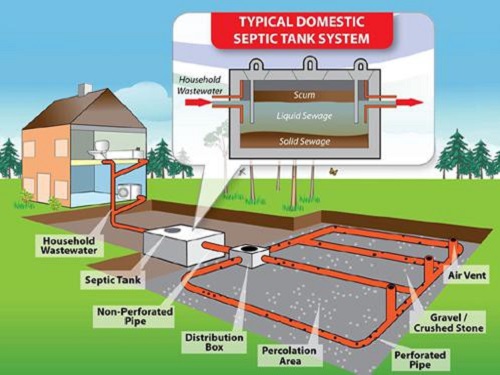
After a while, the wastewater separates in 3 layers.
The top layer is oils and grease and floats above all the waste. This is called scum.
The middle layer is the wastewater along with waste particles.
The bottom layer consists of heavier particles that are heavier than water and form a layer of sludge.
Inside the tank bacteria from the wastewater breaks down the solid waste.
These bacteria decompose the solid waste rapidly allowing the liquids to separate and drain away more easily.
Cleaning of the Septic tanks : A requirement every few years.
If a septic tanks is not cleaned regularly (within 1 year for smaller tanks), toxins and antibacterial substances build up killing the vital bacteria that break down the waste.
Many household cleaners build up sludge and solid waste in the septic tanks and drainfield lines. This leads to the septic system failure, by failure we mean that the solid waste blocks the system and overflows into the watercourse or out of the access grating.
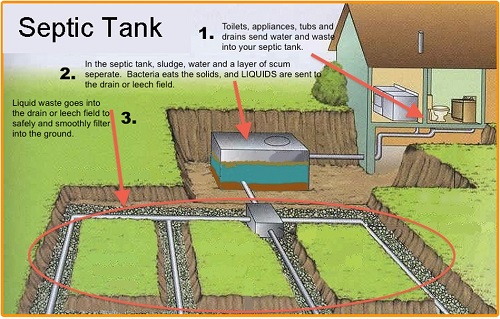
Basics of septic system for homes:
A septic system has a simple design. It is an underground watertight container (mostly rectangular or round) made of fiberglass, plastic or concrete.
The tanks is connected with two pipes (for inlet and outlet). The inlet pipe collects the water waste in the septic tanks, long enough that the solid and liquid waste is separated from each other. The outlet pipe also called the drain field, moves out the preprocessed wastewater from the septic tanks and spreads it evenly in the soil and watercourses.
Specifically, this is how a typical septic system works:
- All water runs out of your house from one main drainage pipe into a septic tanks.
- The septic tanks is a buried, water-tight container usually made of concrete, fiberglass, or polyethylene. Its job is to hold the wastewater long enough to allow solids to settle down to the bottom forming sludge, while the oil and grease floats to the top as scum.
- Compartments and a T-shaped outlet prevent the sludge and scum from leaving the tank and traveling into the drainfield area.
- The liquid wastewater (effluent) then exits the tank into the drainfield.
- The drain field is a shallow, covered, excavation made in unsaturated soil. Pretreated wastewater is discharged through piping onto porous surfaces that allow wastewater to filter though the soil. The soil accepts, treats, and disperses… wastewater as it percolates through the soil, ultimately discharging to groundwater.
- If the drainfield is overloaded with too much liquid, it will flood, causing sewage to flow to the ground surface or create backups in toilets and sinks.
- Finally, the wastewater percolates into the soil, naturally removing harmful coliform bacteria, viruses and nutrients. Coliform bacteria is a group of bacteria predominantly inhabiting the intestines of humans or other warm-blooded animals. It is an indicator of human fecal contamination.

Septic tanks maintenance advice.
Septic systems require relatively little maintenance, but septic tanks owners need to observe certain rules to make sure the tank system operates effectively.
For example, the following items should never be flushed down the drain or toilet:
- Food waste
- Fat, oil and grease
- Plastic bags
- Nappies
- Sanitary towels, including tampons, applicators and wrappers
- Cotton buds
- Condoms
- Bandages and plasters
- Baby wipes
- Medicines, needles and syringes
- Cleaning wipes
- Razor blades
These items will block the inlet and outlet pipes, and also disrupt the biological separation process taking place within the tanks itself.

Tôi là Hưng Thịnh từng tốt nghiệp đại Tài Nguyên và Môi Trường Hà Nội. Có 15 năm kinh nghiệm trong lĩnh vực vệ sinh môi trường. Tôi là chuyên gia trong lĩnh vực xử lý chất thải, Hút bể phốt, Thông tắc cống, Nuôi cấy và vận chuyển bùn vi sinh trên toàn quốc. Nếu cần hỗ trợ có thể liên hệ đến chúng tôi bạn sẽ được các chuyên gia đầu nghành tư vấn giải pháp xử lý triệt để.
